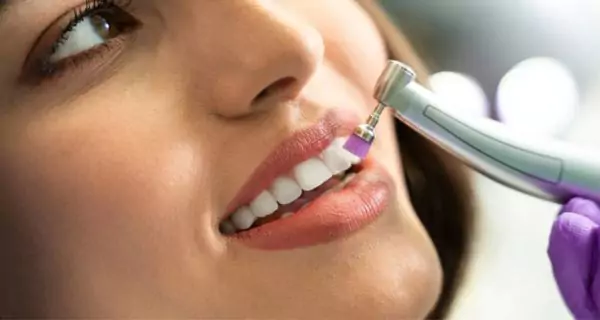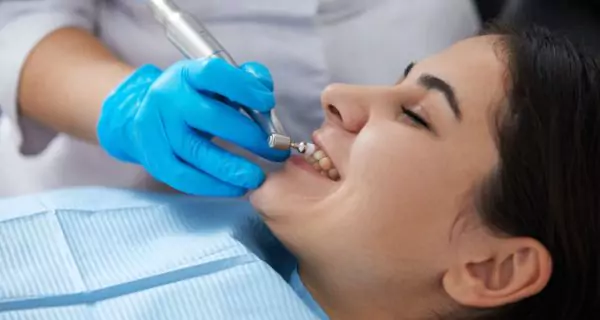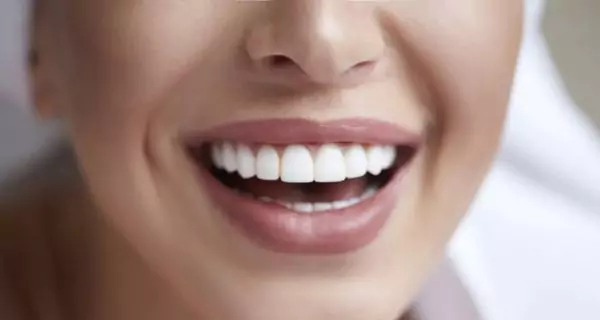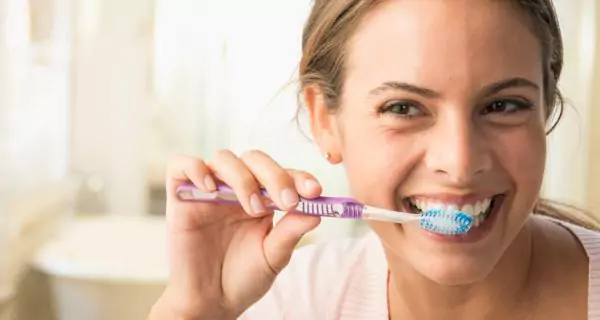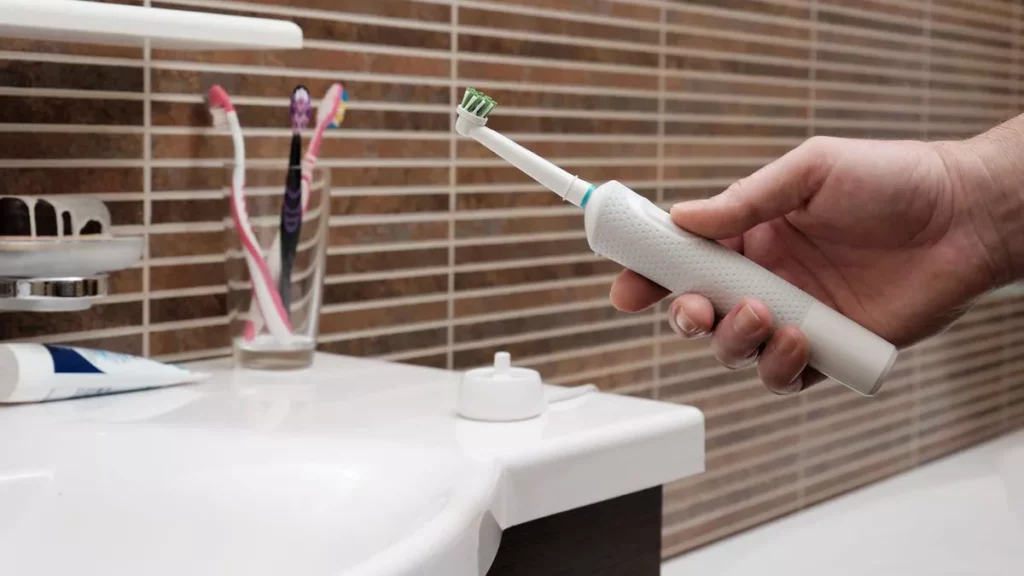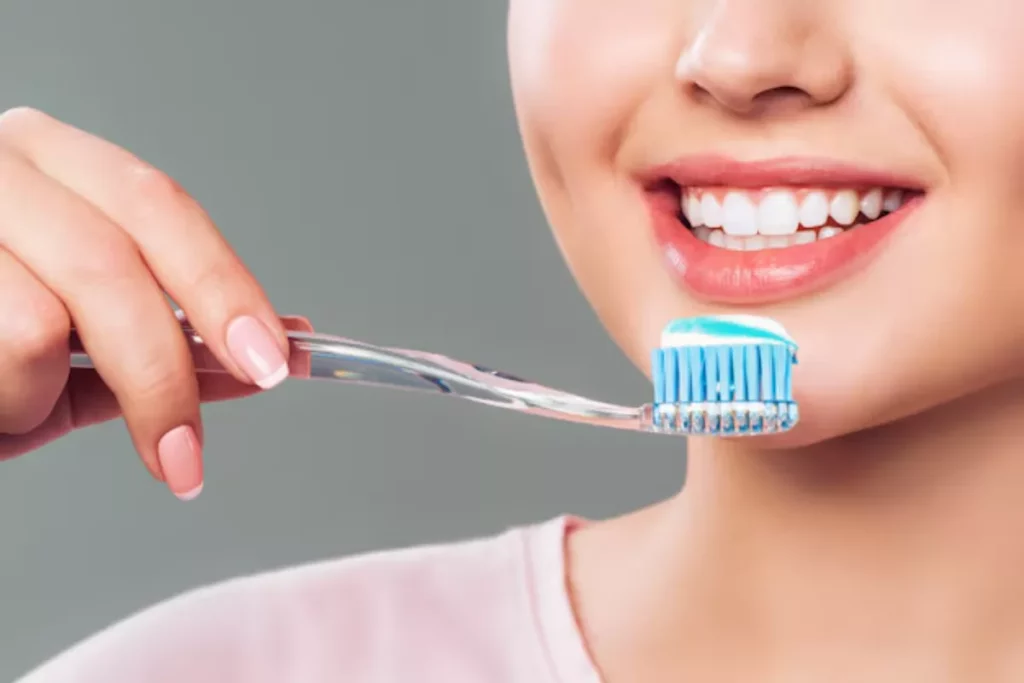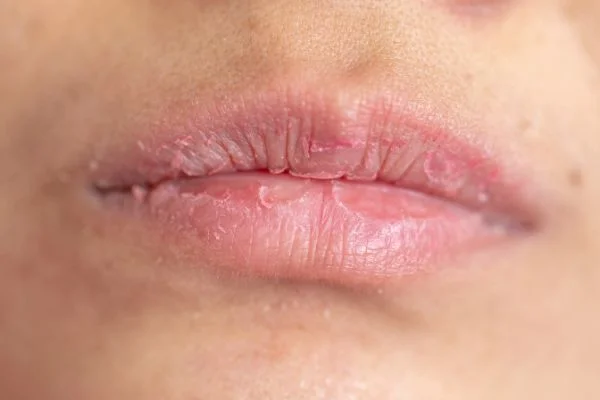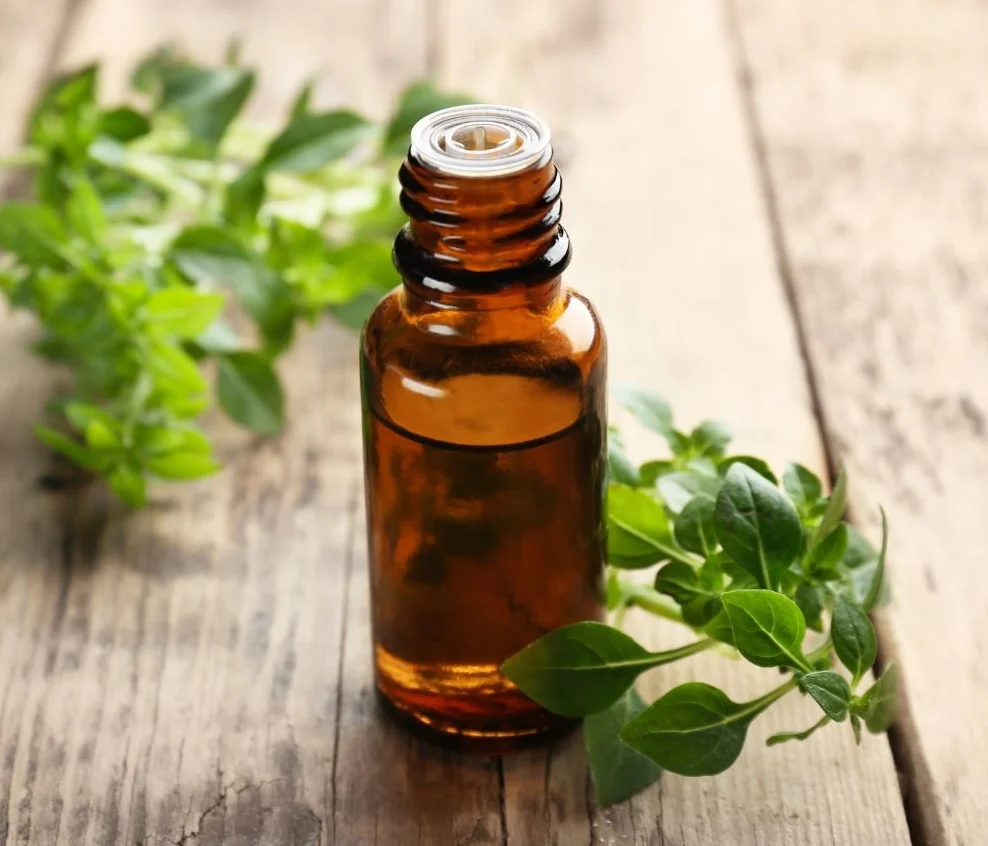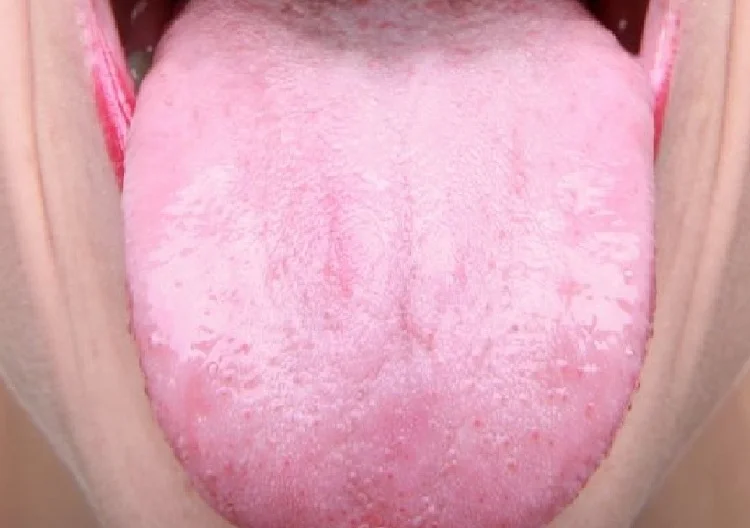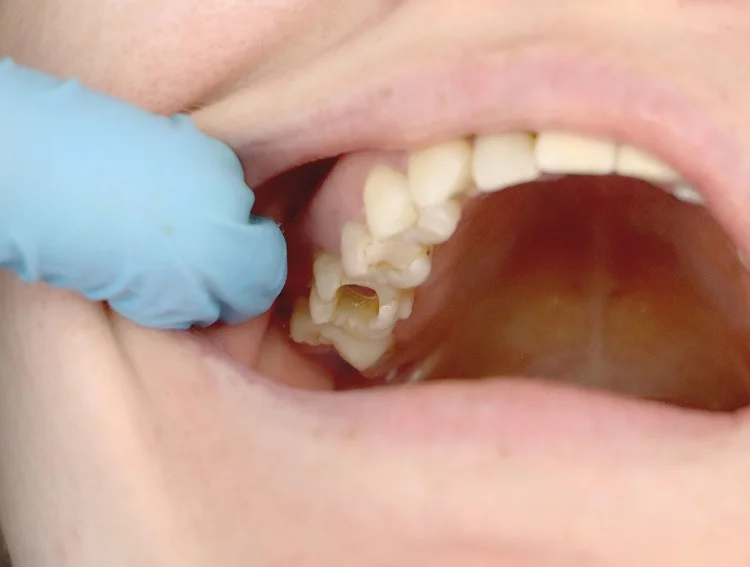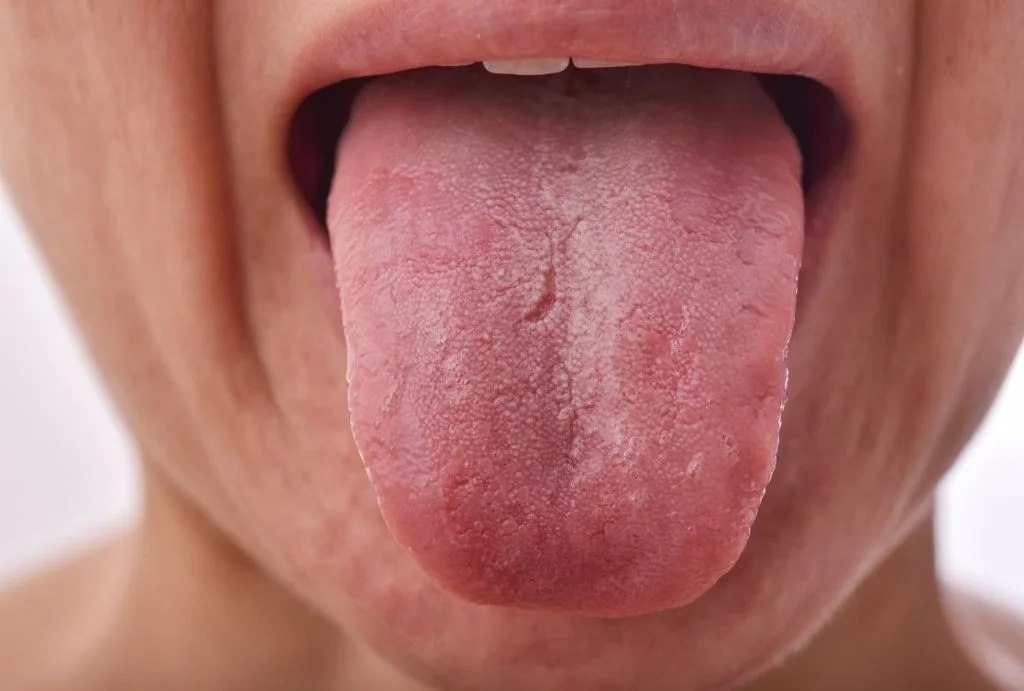Last Updated on: 19th September 2025, 12:29 pm
Teeth polishing is a professional dental procedure that smooths and shines the teeth after cleaning. It removes surface stains and biofilm, makes plaque harder to stick, and leaves teeth feeling clean and smooth. Done by a dental professional, teeth polishing is safe, painless, and helps maintain a bright and healthy smile.
Dental cleanings are one of the most important ways to care for your teeth and prevent oral problems.
One key step during this process is teeth polishing. This procedure not only makes your smile look brighter but also protects teeth by reducing new plaque buildup.
In other words, polishing is both cosmetic and preventive. Let’s explore how this simple step can improve the look of your smile and support long-term oral health.
What is teeth polishing and why is it performed?
Teeth polishing is a procedure done as part of a complete dental cleaning. A cleaning has two main steps:
- Scaling: The dentist or hygienist removes hard tartar from teeth and from under the gum line
- Polishing: A soft rubber cup or brush with a special paste is used to smooth and shine the teeth. In some cases, air polishing is used, which sprays air, water, and fine powder to remove stains more effectively.
The main goals of polishing are to:
- remove stains from coffee, tea, wine, smoking, or certain foods.
- smooth the enamel, making it harder for plaque and bacteria to stick.
Which stains can teeth polishing remove?
Teeth polishing can remove extrinsic stains on the outside of the teeth, but it cannot remove intrinsic stains that come from inside a tooth.
Dentists usually divide stains into two types:
Extrinsic stains (outside the teeth)
- They are caused by coffee, tea, wine, smoking, tobacco chewing, betel quid or areca nut, poor oral hygiene, certain medications, or bacteria.
- The stains that polishing can clean, which are above the gum line (supragingival).
Intrinsic stains (inside the tooth)
- Caused by antibiotics during tooth development, infections, inherited conditions, or calcium deposits.
- These stains do not go away with polishing and often need other treatments, such as whitening or cosmetic dentistry.
How is teeth polishing done at the dentist?
Teeth polishing is a quick, simple, and painless part of a dental cleaning. It smooths and shines teeth, removes surface stains, and protects enamel, helping keep your smile healthy and bright.
What tools are used for teeth polishing?
Dentists use special pastes, brushes, and optional air polishing to clean and shine teeth safely.
The main tools include:
- Polishing paste: coarse, medium, or fine, depending on stains or sensitivity.
- Rotating rubber cup or brush: to apply the paste gently to each tooth.
- Polishing strips: work to clean between teeth in interproximal areas.
- Water/air syringe and suction: keeps teeth clean and dry.
- Air polishing (optional): uses air, water, and fine powder for stubborn stains or braces.
- Fluoride varnish or gel: strengthens enamel after polishing.
What are the steps of teeth polishing?
Teeth polishing is part of a complete dental cleaning, following these steps:
Step 1: Examination and scaling
The dentist checks for cavities, weak enamel, or plaque buildup. Hard tartar is removed with ultrasonic tools or hand instruments. This prepares the teeth for polishing.
Step 2: Polishing the teeth
- Select paste: Coarse or medium is for visible stains and fine for sensitive teeth or maintenance.
- Apply paste: Each tooth is polished with a slow-speed cup or brush using light pressure.
- Occlusal surfaces: Grooves and fissures of molars and premolars are polished with special brushes.
- Interproximal areas: Polishing strips clean between teeth gently.
- Optional air polishing: For stubborn stains or braces, a mix of air, water, and fine powder is used.
Step 3: Finishing touches
Once the polishing is complete, your teeth are rinsed, flossed, and checked. Finally, the dentist may apply a fluoride treatment to strengthen the enamel and protect against new stains and bacteria.
Teeth polishing sessions last 10-20 minutes, but severe stains may take longer.
How often should you go for teeth polishing?
Teeth polishing is usually done every 6 months, but frequency depends on lifestyle and oral habits.
- Coffee, tea, or wine drinkers: may need more frequent polishing.
- Smokers: should polish more often to remove tobacco stains.
- Braces wearers: may need polishing more frequently to clean around the brackets.
Your dentist will recommend the best schedule based on your oral health, diet, and habits.
What are the benefits of teeth polishing?
Teeth polishing is more than just a beauty step. The main benefits include:
- Stain removal: helps reduce light, external stains on the enamel.
- Better hygiene: Smooth surfaces make plaque less likely to build up.
- Fresher breath: removes debris and bacteria that cause odor.
- Cleaner look: Teeth appear shinier and healthier.
- Easier brushing: Polished teeth are easier to clean at home.
Research shows that polishing itself does not prevent gum disease, but people who have it done usually have a lower amount of bacteria in their mouths. This supports overall oral health and makes daily hygiene more effective.
Are there any risks or precautions with teeth polishing?
Teeth polishing is safe when done by a professional, but a few things should be considered:
- Enamel wear: Too much or aggressive polishing over time may slowly wear enamel.
- Sensitivity: Some people may feel mild sensitivity, especially if gums are receding.
- Not always needed: If you have very few stains or are a child, your dentist may skip polishing.
- Existing problems: If you have gum disease or cavities, these should be treated first before polishing.
For most patients, polishing is a gentle, safe, and useful step of dental cleaning. Your dentist will decide how often it should be done, depending upon your oral health and lifestyle.
Can teeth polishing be done at home?
No, professional polishing should only be done by a dentist or hygienist. At-home polishing kits can damage your enamel if used incorrectly.
However, you can maintain results at home by:
- using whitening toothpaste with mild abrasives.
- brushing with an electric toothbrush for better cleaning.
- using floss or interdental brushes to remove food between teeth.
- rinsing with antibacterial mouthwash.
- chewing sugar-free gum with xylitol to keep saliva flowing and teeth naturally cleaner.
These steps do not replace polishing but help keep your teeth brighter until your next visit.
Why should you include teeth polishing in your oral care routine?
Teeth polishing is more than just a cosmetic step. The procedure helps prevent plaque and bacteria buildup, keeps enamel smooth, and makes daily brushing and flossing easier.
When done regularly and combined with good oral hygiene habits, teeth polishing becomes a key ally in maintaining healthy teeth, a fresh mouth, and a bright, confident smile.
Frequently Asked Questions
Does teeth polishing hurt?
Is teeth polishing safe for children?
Does teeth polishing prevent cavities?
How does air polishing differ from traditional polishing?
How often should I get my teeth polished?
Voice and Search (Q&A)
Does teeth polishing hurt?
No, it is painless for most. Some people may feel mild sensitivity for a day or two.
Does teeth polishing whiten teeth?
It removes surface stains, making teeth look brighter, but it doesn’t change their natural color.
Do I need teeth polishing if I brush every day?
Yes, brushing helps, but polishing removes stains and smooths enamel professionally.
Share
References
1. Brett, K., & Horton, J. (2023, November 1). Routine dental polishing for oral health. NCBI Bookshelf. https://www.ncbi.nlm.nih.gov/books/NBK599978/
2. Sawai, M., Bhardwaj, A., Jafri, Z., Sultan, N., & Daing, A. (2015). Tooth polishing: The current status. Journal of Indian Society of Periodontology, 19(4), 375. https://journals.lww.com/jisp/fulltext/2015/19040/tooth_polishing__the_current_status.5.aspx
3. Tungare, S., & Paranjpe, A. G. (2022, September 26). Teeth Polishing. StatPearls – NCBI Bookshelf. https://www.ncbi.nlm.nih.gov/books/NBK513328/
4. Watson, K. (2019, December 19). Everything you need to know about tooth polishing. Healthline. https://www.healthline.com/health/teeth-polishing
5. WebMD Editorial Contributors. (2024, October 16). What to know about dental Polishing. WebMD. https://www.webmd.com/oral-health/what-to-know-about-dental-polishing
-
Dr. Yeidy Carolina Mesa [Author]
DDS Yeidy Carolina Mesa Passionate Dentist | Advocate for Accessible Oral Health Education Graduating from Universidad CES in 2022, I am a dedicated general dentist with a lifelong passion for helping others and making a meaningful impact in the world. My journey into dentistry began at the age of 7, inspired by my own experience with braces and overcoming a fear of the dentist. This personal journey shaped my mission to help patients conquer their own dental anxieties and embrace a healthier,...
View all posts
-
Nayibe Cubillos M. [Medical Reviewer]
Pharmaceutical Chemestry |Pharmaceutical Process Management | Pharmaceutical Care | Pharmaceutical Services Audit | Pharmaceutical Services Process Consulting | Content Project Manager | SEO Knowledge | Content Writer | Leadership | Scrum Master
View all posts
A healthcare writer with a solid background in pharmaceutical chemistry and a thorough understanding of Colombian regulatory processes and comprehensive sector management, she has significant experience coordinating and leading multidisciplina...



